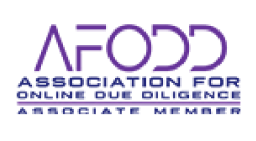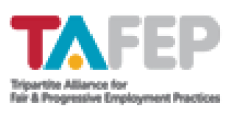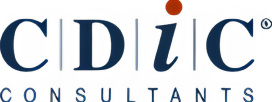The HR profession has been disrupted over the years, along with most professions, and in a good way. From operating in closed conference rooms behind the scenes to now having a seat at the Boardroom table – the modern HR leader is more in the spotlight than ever before.
However, this doesn’t come without its challenges. With the speed of change brought about by the adoption of technology, HR leaders need to be more agile than ever before and adapt quickly to the impact of technology on the industry. There are signs though this is not as easy as it might seem. A recent KPMG report reveals unrest in the HR community. Of the surveyed 1200 global HR executives from 64 countries, 39% are forward–looking and confident HR leaders redefining obsolete models and implementing technologies such as analytics, digital labour, and AI. However, most of the HR leaders surveyed are confused and overwhelmed by so many new additions. They are either struggling to adapt or ignoring the rate of change.
You only need to look at Singapore to see how quickly the HR industry is changing as the country takes the lead on driving the HR leadership agenda by championing new world strategy. The country is on a mission to not only be the most digitally savvy in the world but to stay ahead of the game as it strives towards realising its smart nation vision. To this end, the Singapore government is making sure that the country’s workforce is well equipped for the future world. And this requires a different approach to defining workforce requirements, to hiring talent and to developing future skills.
To show its commitment, the Singapore government has convened a HR Industry Transformation Advisory Panel (HRTAP), comprising tripartite partners, HR and business leaders, and representatives from the HR services sector. The panel is responsible for formulating strategies and leading efforts that would further develop the country’s HR services sector. It will also support HR professionals in walking the tech journey to better enable workforce rejuvenation and business transformation – all the while becoming more agile.
Where technology and HR intersect
To navigate the new world of business, it is key for HR professionals to build up new skills and embrace technology, given the evolving nature of job demands.
With the emergence of technology and human talent, the HR leader needs to be incredibly agile with how they approach the job of talent acquisition, background screening, skills development and talent retention. In some cases, companies need to go back to the drawing board and map out what the new needs are of the workforce, taking into consideration the technology requirements. They need to ask: with the introduction of technology, what skills are required to wrap around and work in with the new technology? This in itself requires a whole new mindset and approach for the HR leader.
There are some companies already doing this exceptionally well – especially the banks. As technology continues to overhaul jobs in the financial sector, banks have had to “rejuvenate” their workforce and HR leaders have had to take an active role in this.
With more and more customers self-servicing through the use of bank chatbots, self-service platforms, and interactive virtual agents, HR leaders have had to acknowledge the changing workforce dynamics and evolve traditional jobs in order to manage digital change.
Banks have positively responded to digital transformation by identifying and addressing workforce skills gaps, redesigning jobs and upskilling and training their people to ensure a smooth transition to new roles.
DBS is a prime example of this. The bank has reskilled more than 500 contact-centre employees over the last 12 months to take on 13 new roles as part of its digital transformation strategy including roles like a digital evangelist and scrum master. Digital evangelists encourage customers to use DBS’ digital channels through monthly roadshows at community centres or bank branches. Scrum masters help their colleagues use a project management methodology called Agile to solve problems.
As you can see in banking, there are new jobs and roles emerging every other day due to the intersection between technology and human-assisted services. However, whilst the banking sector has leapt ahead with changing its traditional approach to workforce planning, hiring and screening in order to build a workforce for the digital future, the challenge is now for other sectors to move quickly in adopting a more agile approach to HR.
The role of HR tech
HR tech can build capacity for HR professionals to drive workforce transformation and is already creating capacity for HR professionals to better support business transformation bearing fruit for some companies.
At DBS Bank, by using AI, digital platforms and chatbots, the DBS HR team has streamlined recruitment processes, strengthened employee engagement touchpoints and made staff training and development more accessible to employees.
At the management level, data analytics capability is also helping to drive stronger evidence-based decision-making in areas such as recruitment and productivity. For HR staff, the introduction of a recruitment chatbot has allowed them to focus on more strategic functions such as talent advisory and candidate sourcing. The transfer of knowledge during the chatbot development process has also benefited many in DBS’ talent acquisition team, some of whom can now call themselves “chatbot coaches”. Collectively, these improvements have translated into savings of 626,000 man hours for DBS since the transformation began in 2012.
So, how do you transition to a digitally savvy, agile and people-focused company?
- Create a clear roadmap for digital transformation so that you can work comprehensively towards future-proofing your HR strategies, rather than being reactive. This needs to cover what technology decisions are being made in the business and how they are integrated into HR strategies, talent acquisition and hiring plans, background screening to development and retention plans.
- Ensure HR works closely with IT in order to work through technology requirements of the business and the associated skills required and the technology that is available to you to be able to develop into agile HR leaders.
- Upskill your HR team with the right mindset, tools and knowledge. The modern HR leader will need to be able to navigate technology selection and system implementation effectively and efficiently ensuring a solid ROI. Technology implementation programs can often cost significantly if done wrong and it is imperative to be able to manage accordingly to get the right results.
In summary, a strong, agile HR framework will put businesses and workforces in good stead to navigate their respective digital transformation journeys. Don’t get left behind.






